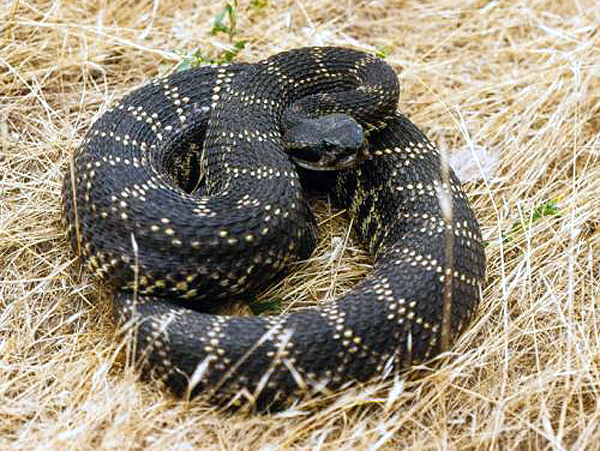Search This Blog
Pit Vipers The Optimal Blend of Style & Performance. Pit Vipers Outdoor Fashion and Lifestyle.
Featured
- Get link
- X
- Other Apps
What is Southern Pacific Rattlesnake?
The Southern Pacific rattlesnake is a highly venomous subspecies of snake found in the United States and Mexico. This species is pit viper, which contains heat- sensing organs on each side of its face between the nostrils and the eyes.

-Where do Southern Pacific Rattlesnake live?
These rattlesnakes live in a variety of areas, including grasslands, mountain forests, coastal dunes, rocky deserts, hillsides, and farmland. At the northern end of their range, they hibernate in rock crevices and ledges. Many individuals (sometimes hundreds) gather in a "snake den" for the winter.
-What does Southern Pacific Rattlesnake look like?
The stout body of the South Pacific rattlesnake ends with a short, stubby tail. The large triangular head widens at the base. The neck is thin. They usually have a thin brown, gray, or black stripe extending from the corner of the eye to the mouth, covering the eyes. There are large dark fringe spots of brown, olive, tan, gray or black on the back. These spots narrow into strips towards the tail. The body length of an adult snake is usually 75 to 100 cm (30 to 44 inches). Some can grow to more than 135 cm (54 inches).
-What does Southern Pacific Rattlesnake feed on?
Rattlesnakes eat only when they are hungry. If they eat a lot in their last meal, adults can eat for two weeks between meals. Juveniles usually eat once a week.
Young snakes mainly feed on small lizards, while adult snakes usually feed on birds, lizards, snakes, frogs, insects, and small mammals, including mice, rats, rabbits, hares, and ground squirrels. (Adult California ground squirrels are immune to the venom of rattlesnakes, and they will fight strongly against any snake they consider to be a threat.)
Rattlesnakes are usually nocturnal hunters. One way they track their prey in the dark is to swing their forked tongues back and forth to catch the scent of the prey on the ground. The scent is delivered to the organ that connects the upper jaw to the brain. These snakes also ambush the prey by hiding near the prey's territory to capture the prey. Usually, a bite is enough to kill the prey, and then it will run away or fly away.
-Behavior
Since rattlesnakes are cold-blooded animals, their body temperature depends on the surrounding environment. In order to maintain an ideal body temperature, rattlesnakes will hide in the sun or in the shade all day long. They mainly hunt and move at night to avoid excessive temperature during the day. When the ambient temperature is low, hunting at night can also peak their thermal sensitivity. Inactive during the colder winter period.
-Reproduction
Rattlesnakes have complex reproductive behaviors. In the spring, females preparing to mate will release a chemical substance called pheromone. When a male rattlesnake smells the pheromone, it will chase the female. If two males compete for the same female, they may perform a kind of "battle dance." In this picture, two male birds surround each other, pushing one-third of their bodies up across the ground. Because snakes have no limbs to maintain balance, both types of snakes will fall to the ground quickly. This encounter can be repeated for more than 30 minutes. In the end, a snake, usually the smaller of the two snakes, retreated. The other snake continued to search for the female snake. Once he found her, he would touch her with his tongue and rub her back with his chin to pursue her.
Fertilization is internal. Unlike many snakes, most rattlesnakes are ovoviviparous. About 90 days after mating, 4-12 live, well-developed pups (7-10 inches) are born. They are dangerous from birth because they are born with short fangs and the ability to inject venom. They usually stay in the place of birth for about two weeks.
- Get link
- X
- Other Apps
Popular Posts
What is Eastern Diamondback Rattlesnake?
- Get link
- X
- Other Apps
Himalayan Pit Viper-Gloydius Himalayanus
- Get link
- X
- Other Apps
Comments
Post a Comment